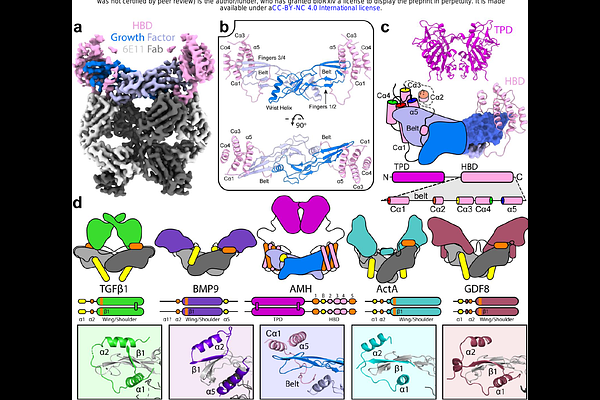Structural Basis of Non-Latent Signaling by the Anti-Mullerian Hormone Procomplex

Structural Basis of Non-Latent Signaling by the Anti-Mullerian Hormone Procomplex
Howard, J. A.; Hok, L.; Cate, R. L.; Sanford, N. J.; Hart, K. N.; Leach, E. A.; Bruening, A. S.; Pepin, D.; Donahoe, P. K.; Thompson, T. B.
AbstractMost TGF-beta; family ligands exist as procomplexes consisting of a prodomain noncovalently bound to a growth factor (GF); Whereas some prodomains confer latency, the Anti-Mullerian Hormone (AMH) prodomain maintains a remarkably high affinity for the GF yet remains active. Using single particle EM methods, we show the AMH prodomain consists of two subdomains: a vestigial TGF-beta; prodomain-like fold and a novel, helical bundle GF-binding domain, the result of an exon insertion 450 million years ago, that engages both receptor epitopes. When associated with the prodomain, the AMH GF is distorted into a strained, open conformation whose closure upon bivalent binding of AMHR2 displaces the prodomain through a conformational shift mechanism to allow for signaling.